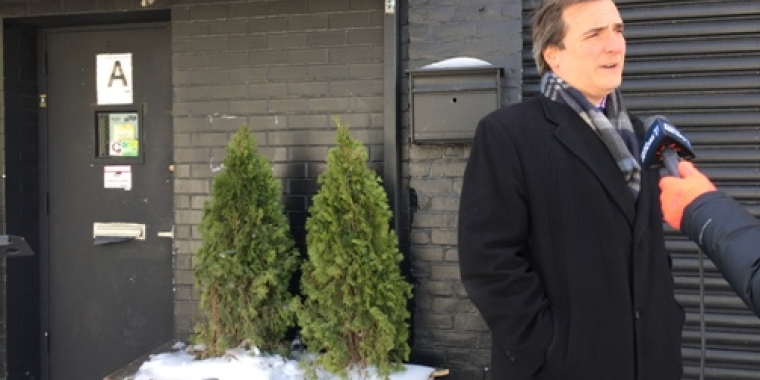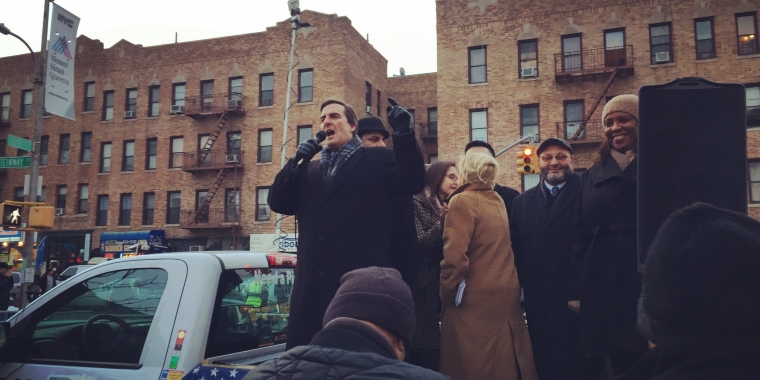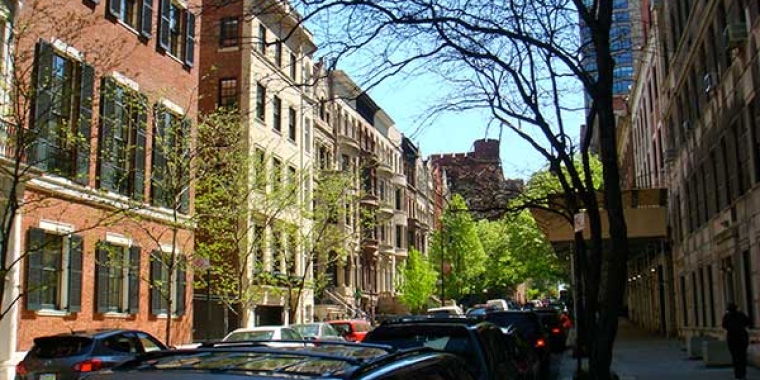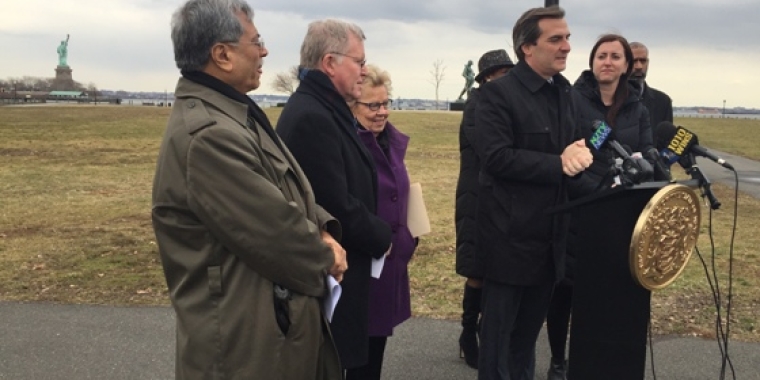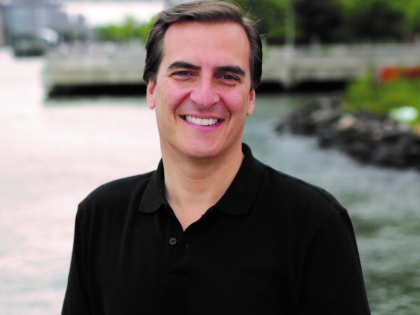
Streetsblog: Hundreds of Activists Rally for More Space on the Queensboro Bridge — And DOT Agrees!

Hundreds of protesters took over the south outer roadway of the Queensboro Bridge to demand a dedicated lane for pedestrians so that walkers in both directions don’t have to share a single path with two-way cyclists — and the Department of Transportation said it agrees with the demand.
But … it still can’t happen until 2022.
At the rally, politicians including Council Members Jimmy Van Bramer and Ben Kallos — whose districts are connected by the fabled span — and State Senators Jessica Ramos and Mike Gianaris made the same demands that activists and pols have been making for years: That booming bike and pedestrian use of the bridge — coupled with declining driving — made it essential to convert the southernmost car lane (which is conveniently already separated from other car lanes on the bridge) into a pedestrian-only lane. Cyclists would then split the north outer roadway.
“We don’t need the money to do this,” said Van Bramer, who, with Kallos, has promised to fund the security fencing that the DOT says it must construct. “We need the political will.”

In a statement, the DOT agreed with Van Bramer.
“We couldn’t agree more: adding bike and pedestrian capacity to our bridges is a great idea,” said agency spokesman Brian Zumhagen. “We’re completing urgent safety upgrades to the Queensboro Bridge, a 100-plus-year-old structure, and we need extra lane capacity to get it done. We also have to evaluate every project in the context of our historic budget crisis. But conversations are ongoing on moving this project forward, and we’re grateful for the community’s enthusiasm for it.”
That full-throated endorsement is more of a sore-throated kind: the repair work on the Queensboro Bridge won’t be finished until 2022, as DOT has said. But the agency has also been caught making other excuses that have contradicted previous explanations for why the additional space could not be made, as Streetsblog has reported.
As a result, the bridge configuration will remain nine lanes for automobile traffic, one-half lane for pedestrians and one-half lane for cyclists. That formula was mocked in one protester’s sign (right).
After the speeches, scores of pedestrians walked over the bridge, enjoying, for the first time since the roadway was seized from pedestrians for cars in the 1990s, spectacular views of Manhattan and booming Long Island City.
Meanwhile, on the north outer roadway, conditions continued to be dangerous and unnerving for all users. The roadway — a single car lane — has since 2000 been serving as the lone route for cyclists and pedestrians. But the narrow pathway has become a victim of the city’s own Vision Zero strategy of encouraging cycling and walking, former city transportation official Jon Orcutt ruefully pointed out.
“The bike boom is a fulfillment of years of city policy, but when it happened during the coronavirus, the city wasn’t ready” with more safety infrastructure, said Orcutt, who was one of two members of the so-called QB6 — six protesters who got arrested in 1990 at a similar rally to create more space on the bridge — on hand on Sunday. Charles Komanoff also attended and spoke about how basic transport is an essential equity issue.
At the time Komanoff and Orcutt were arrested, the rallying cry was “Just One Lane,” Orcutt reminded. “Now, it’s ‘One More Lane!'”
Conditions on the north outer roadway have not improved, though one person on Twitter noticed that the DOT prepared for the rally by at least painting new symbols for bikes and pedestrians on the roadway. But the new paint only underscored the danger of the roadway: it’s so narrow that even the silhouettes indicating where cyclists should go are crashing into each other.
The pedestrian experience on the north outer roadway is terrible and dangerous. Cyclists pass within inches of walkers, as the two-way bike path and two-way footpath share a single lane.
